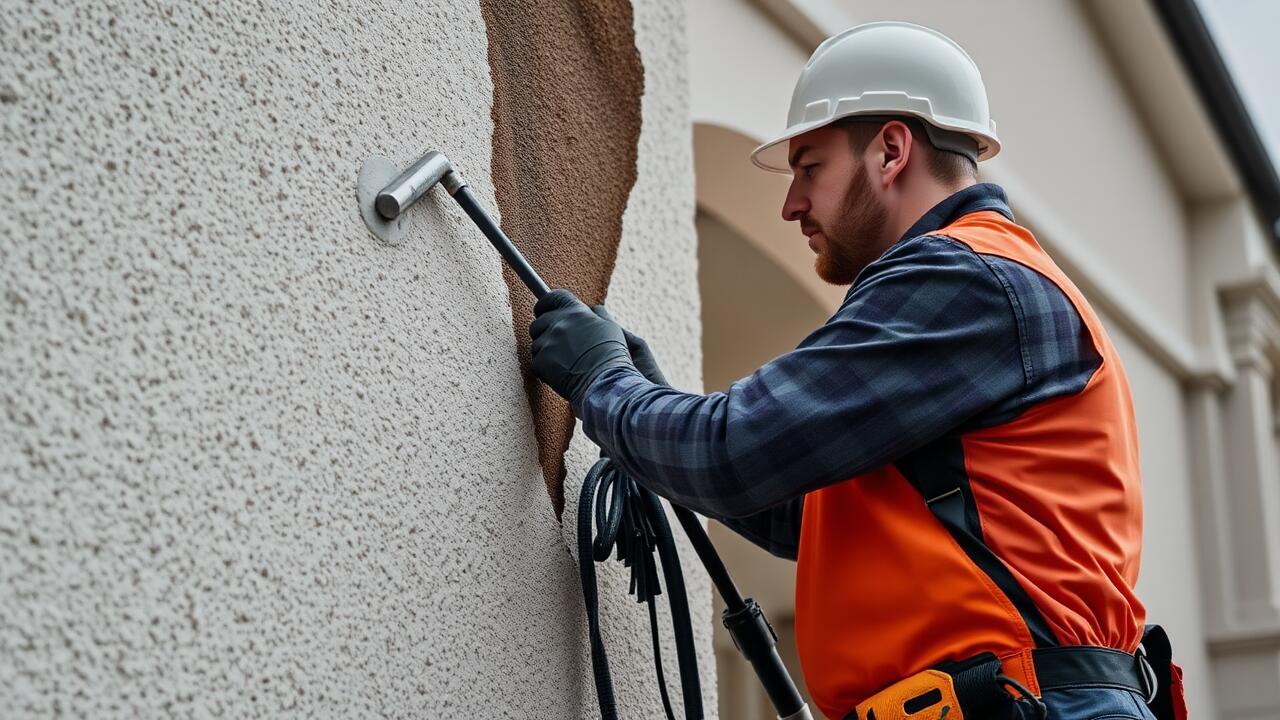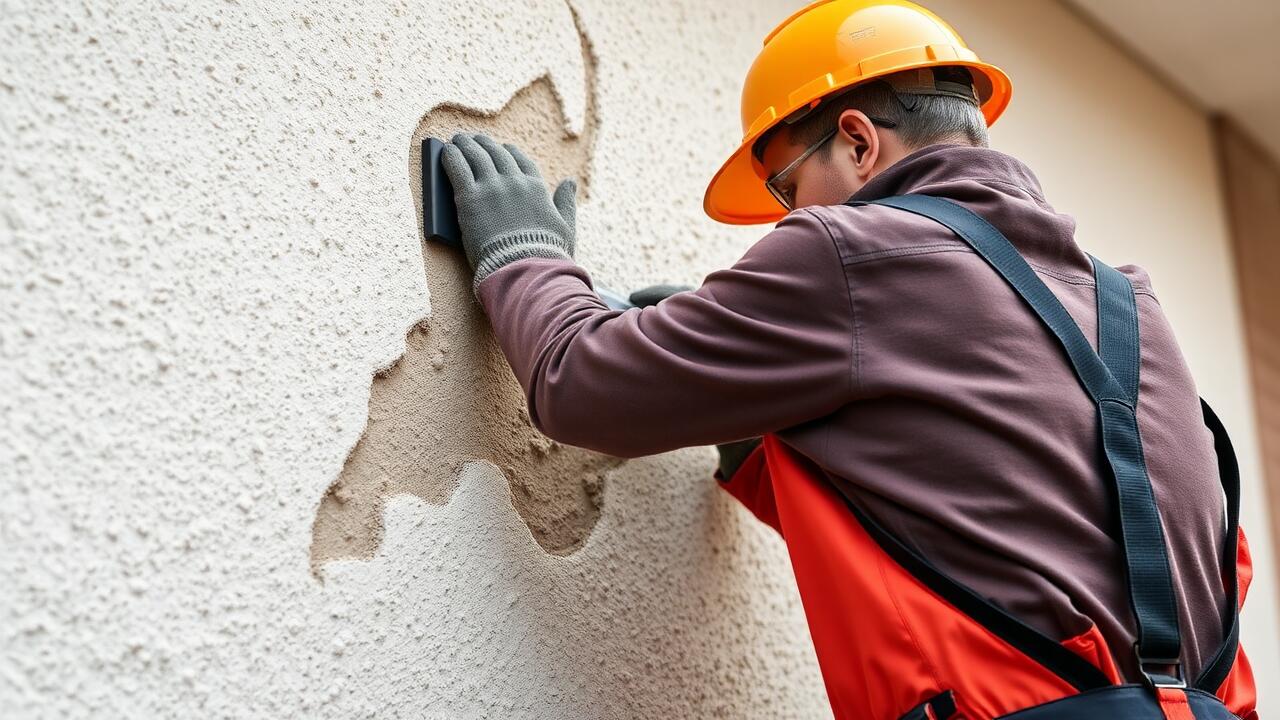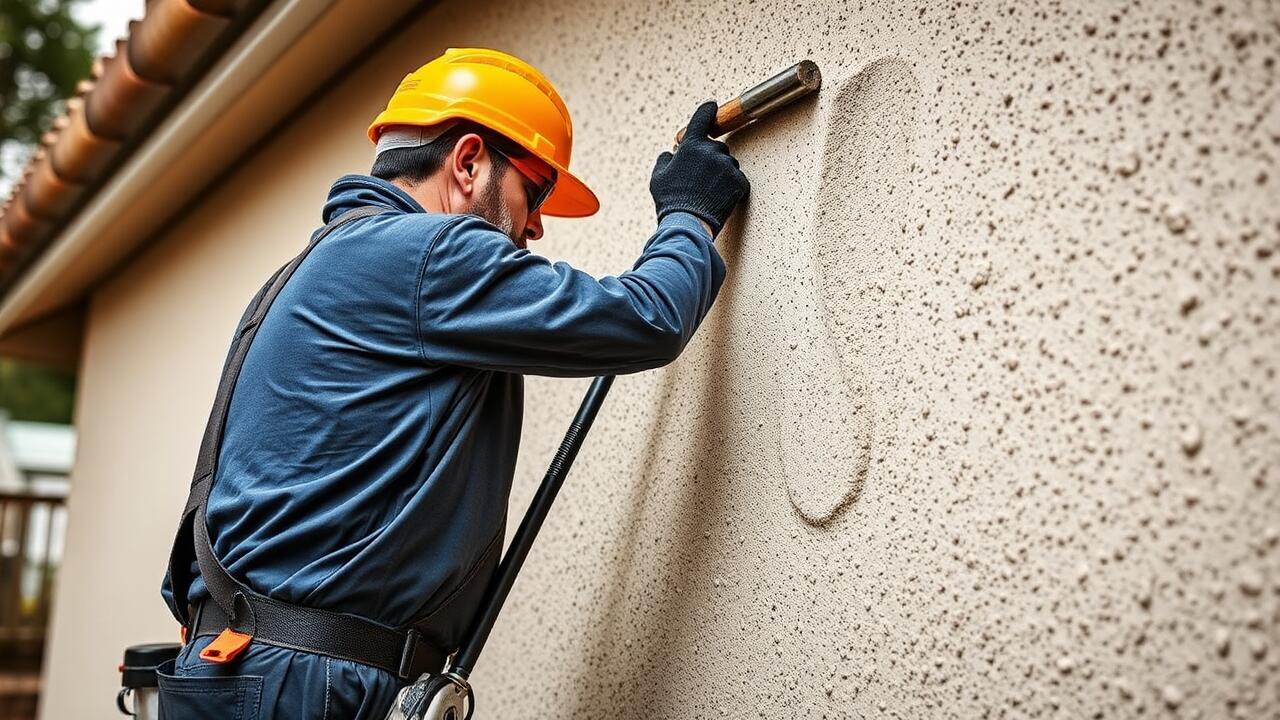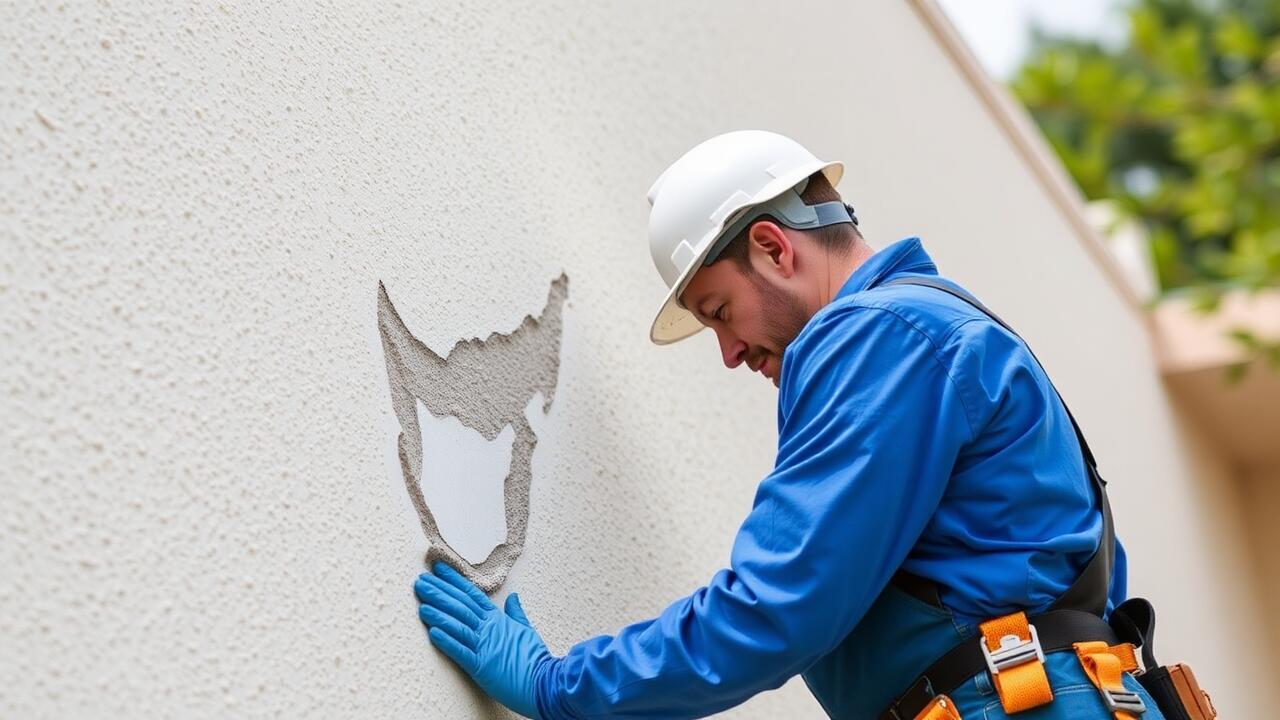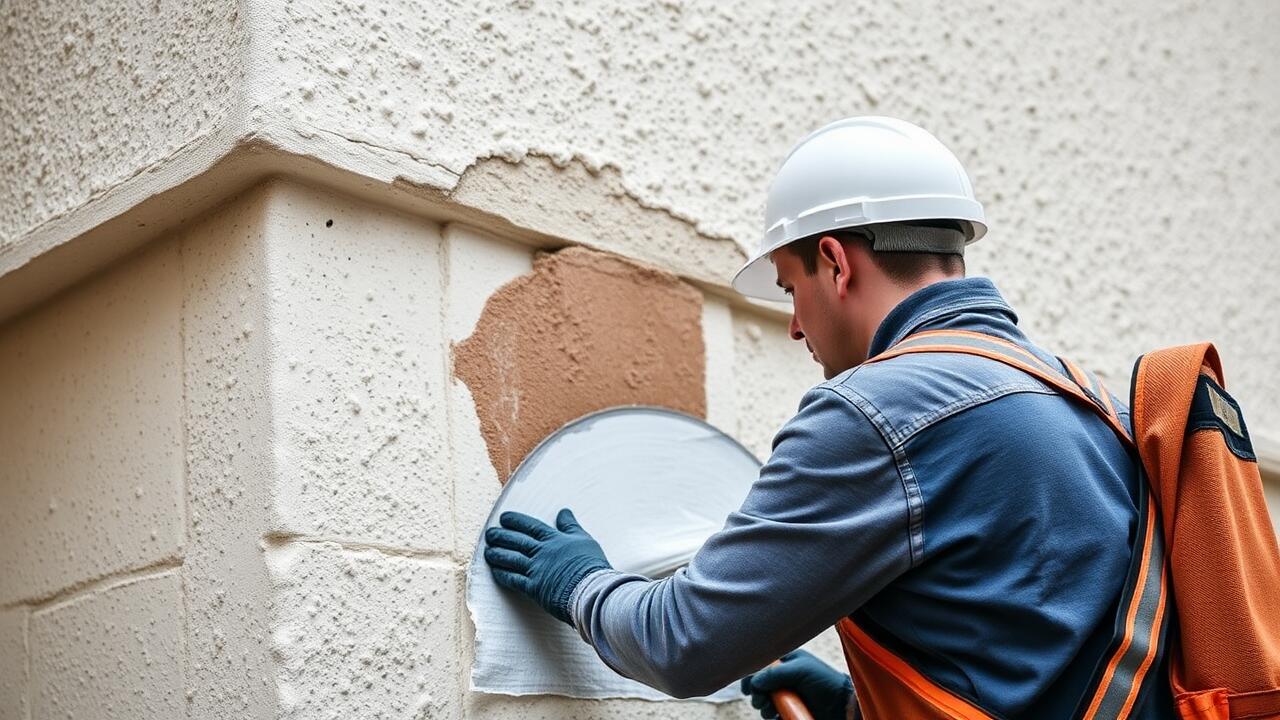
Repairing Stucco Delamination
Repairing stucco delamination involves a careful approach to restore the wall's integrity. Begin by assessing the extent of the damage. Identifying loose and peeling areas is crucial. Ensure safety by wearing protective gear during the repair process. Use a putty knife to remove damaged stucco. Clean the surface thoroughly to promote adhesion for new materials. Depending on the severity of the delamination, it may be necessary to apply a bonding agent before patching with fresh stucco.
Once the repair material is applied, smooth it out to blend with the surrounding surface. Proper curing is essential for a durable finish. Homeowners can consider searching for "Stucco Repair near me" to find local professionals who specialize in this type of work. Engaging experienced contractors often guarantees that repair methods adhere to best practices, ensuring long-lasting results. If the damage is extensive, professional assistance may be the most efficient solution.
Step-by-Step Guide to Effective Repairs
The first step in repairing stucco delamination involves assessing the damage. Look for areas where the stucco has pulled away from the underlying framing or where cracks have appeared. This can typically be identified by visual inspection. Take note of the extent of the delamination and the condition of the substrate beneath. If the damage is extensive or includes water intrusion, it may be wise to consult a professional or search for "Stucco Repair near me" to find qualified help.
Once you have evaluated the damage, begin the repair process by removing the compromised stucco. Use a chisel or a utility knife to carefully cut away the delaminated layers. After removing the damaged sections, clean the area thoroughly to ensure proper adhesion of the new material. Apply a bonding agent to the substrate if needed, then mix and apply the new stucco to fill the gaps. Pay attention to texture and finish to match the surrounding area. Smooth and feather the edges for a seamless look.
Professional vs. DIY Repairs
Choosing between professional and DIY repairs for stucco delamination depends on various factors, including skill level, time availability, and the extent of damage. Professionals possess the experience and tools necessary to handle complex issues, ensuring the work meets industry standards. They can quickly identify underlying problems, which might be overlooked by someone without specialized knowledge. This can prevent further damage and save costs in the long run.
On the other hand, DIY repairs can be a cost-effective solution for minor issues, provided that the homeowner has adequate tools and a clear understanding of the repair process. The abundance of online resources simplifies the learning curve, empowering individuals to take matters into their own hands. However, a lack of expertise may lead to improper fixes, which could exacerbate the existing problems. Searching online for "Stucco Repair near me" can help find local professionals or resources to assist in the repair process.
Weighing the Pros and Cons
When considering whether to tackle stucco repairs as a DIY project or hire a professional, it's important to weigh the advantages and disadvantages of each approach. DIY repairs may save money upfront, allowing homeowners to invest in materials and tools while relying on their own skills. Additionally, tackling the project independently can offer a sense of satisfaction and personal accomplishment. However, the lack of experience can lead to improper application, which may exacerbate existing issues.
On the other hand, hiring a professional for stucco repairs typically guarantees a level of expertise that reduces the risk of further damage. Professionals are well-versed in the latest techniques and materials, and they can efficiently diagnose underlying problems that a homeowner might overlook. The downside lies in the cost of professional services, which can be significant. Homeowners often search for "Stucco Repair near me" to find local specialists, but this expense must be balanced against the value of getting the job done correctly the first time.
Impact of Climate on Stucco Delamination
Stucco is a material that is both durable and versatile, but its performance can be significantly affected by climate conditions. Extreme temperatures, whether intense heat or freezing cold, can stress the material, leading to cracks and delamination. In regions with high humidity, moisture can seep into the stucco, causing it to expand and weaken. This exposure to varying weather patterns contributes to the overall integrity of stucco surfaces, making it essential for homeowners to be aware of the potential risks associated with their local climate.
When faced with the threat of stucco delamination due to environmental factors, it is crucial to seek timely repairs. Finding a service for "Stucco Repair near me" can provide the necessary expertise to address any issues promptly. Not only does this ensure the aesthetics of the home remain intact, but it also helps maintain structural integrity. Weatherproofing and regular maintenance can mitigate some of the adverse effects of climate, preserving the longevity of stucco finishes.
How Weather Conditions Affect Stucco Integrity
Weather conditions play a crucial role in the integrity of stucco. Extreme temperatures, whether hot or cold, can cause the material to expand and contract. This constant movement may lead to cracks forming on the surface. Additionally, heavy rainfall can introduce moisture into the stucco system. Moisture trapped within stucco can weaken the bond between layers, making it more susceptible to delamination.
Humidity also affects stucco performance. High humidity levels can lead to prolonged dampness, which risks mold growth and deterioration of the underlying structure. In dry conditions, stucco may become brittle over time, increasing the chances of damage during seasonal changes. Homeowners experiencing issues should consider searching for “stucco repair near me” to find professionals who can address these weather-related concerns effectively.
FAQS
What is stucco delamination?
Stucco delamination refers to the separation of the stucco layer from the underlying substrate, which can occur due to moisture intrusion, improper installation, or environmental factors.
How can I tell if my stucco is delaminating?
Signs of stucco delamination include visible cracks, bulging or sagging areas, water stains, and peeling paint. If you notice any of these symptoms, it’s important to investigate further.
What are the common causes of stucco delamination?
Common causes of stucco delamination include poor installation practices, lack of proper drainage, moisture intrusion, and extreme weather conditions.
Can I repair stucco delamination myself?
While minor repairs can be tackled as DIY projects, it is recommended to consult a professional for extensive issues to ensure proper assessment and repair techniques are used.
How does climate affect stucco integrity?
Climate plays a significant role in stucco integrity; extreme heat, heavy rainfall, and freeze-thaw cycles can lead to moisture retention and eventually cause delamination. Proper installation and maintenance are crucial to mitigate these effects.
